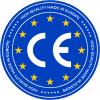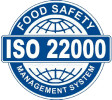Assisted reproduction (ART), also known as medically assisted procreation (MAP), is a set of clinical and biological practices that enable a heterosexual couple or an unmarried woman to conceive a child. This article explores the different techniques available, the stages in the MAP process and the implications for those concerned.
Fertilisation techniques: what are they? Assisted reproduction (ART)
There are several methods of medically assisted procreation, each adapted to specific situations. Here are some of the most commonly used:
Artificial insemination
Artificial insemination is often the initial step in a MAP programme. This method involves injecting sperm directly into the woman’s uterus during her ovulatory period. Ideal candidates for this technique are often couples with minor fertility problems or unmarried women wishing to conceive without a male partner.
Advantages: simple, non-invasive and less expensive procedure.
Disadvantages: relatively low success rate compared with other techniques.
IVF (in vitro fertilisation)
In vitro fertilisation, commonly known as IVF, involves collecting eggs from the woman and sperm from the man and fertilising them in the laboratory. Once the embryos have been obtained, they are transferred to the woman’s uterus in the hope that they will implant and develop.
Advantages: higher success rate, possibility of genetically diagnosing the embryos before transfer.
Disadvantages: complex, costly and sometimes emotionally distressing.
Frozen embryo transfer
Frozen embryo transfer (FET) is a complementary technique to IVF. After a first attempt at IVF, surplus embryos can be frozen for later use. They will be thawed and implanted in the uterus during a subsequent cycle.
Advantages: several attempts possible without further ovarian stimulation, reduced costs and stress.
Disadvantages: risk of embryo survival after thawing.
Stages in the process – Assisted reproduction (ART)
A PMA pathway is structured around a number of key stages that enable fertility problems to be assessed and treated, while providing personalised follow-up for candidates.
Initial consultations and preliminary examinations
Initially, detailed medical consultations and preliminary examinations are carried out to assess fertility factors in both partners or the single woman. This may include hormone tests, sperm analyses and pelvic ultrasounds.
Ovarian stimulation
For techniques such as IVF or artificial insemination, ovarian stimulation is often necessary. This involves stimulating the ovaries to produce several oocytes in a single cycle. Specific drugs and hormonal injections are generally used for this.
Puncture and fertilisation
In the case of IVF, an ovarian puncture is carried out to collect the oocytes produced. These oocytes are then brought into contact with spermatozoa for in vitro fertilisation. For artificial insemination, this stage is replaced by the direct injection of sperm into the uterus.
Eligibility criteria for Assisted reproduction (ART)
There are certain criteria that must be met in order to benefit from MAP. These criteria vary slightly from country to country, but are broadly similar.
Age and marital status
Age is a determining factor for MAP. In general, women must be under 43 to be eligible. Marital status also plays a role, as the techniques can be offered to married or cohabiting heterosexual couples and to unmarried women in some countries.
Medical history
Complex medical histories often require a full assessment. This may include genetic diseases, a history of cancer, or major hormonal dysfunctions.
Fertility problems
The main reason for undergoing MAP is obviously related to various fertility problems. These can affect one or both partners and range from sperm abnormalities in men to ovulatory or tubal disorders in women.
Emotions and psychological support: Assisted reproduction (ART)
The MAP process can be emotionally challenging. It is therefore crucial to surround yourself with the right psychological support to help you cope with the ups and downs.
Family and social support
Having the positive support of friends and family can often help you get through this process with greater serenity. Open dialogue between loved ones can help ventilate emotions and provide day-to-day support.
Support groups and therapy
It is also possible to join specific MAP support groups where participants share their personal experiences. In addition, individual or couple therapy with a mental health professional specialising in infertility can offer significant help.
The financial aspects of Assisted reproduction (ART)
The cost of MAP varies considerably from country to country and also depends on the techniques used.
Treatment costs
The financial factor plays an important role in the choice of method. Costs may include :
Artificial insemination: usually less expensive with a more affordable average cost.
IVF: very expensive but with a higher success rate.
Frozen embryo transfer: intermediate costs as some steps have already been taken.
Financial aid and insurance
There are a number of financial aid options available to support couples or women throughout the MAP process. Depending on the country, there may be different levels of public or private insurance reimbursement for MAP treatments.
Innovations and future prospects: Assisted reproduction (ART)
The field of MAP is constantly evolving, with new technological innovations and therapeutic approaches.
Technological advances
Advanced technologies, such as embryo gene editing and immune compatibility testing, are making rapid progress and promise substantial improvements in both the success and safety of procedures.
New protocols and treatments: Assisted reproduction (ART)
New drug protocols and holistic approaches incorporating acupuncture, meditation and dietary modifications are showing positive results. Research continues to explore these avenues to offer increasingly personalised and effective solutions.









